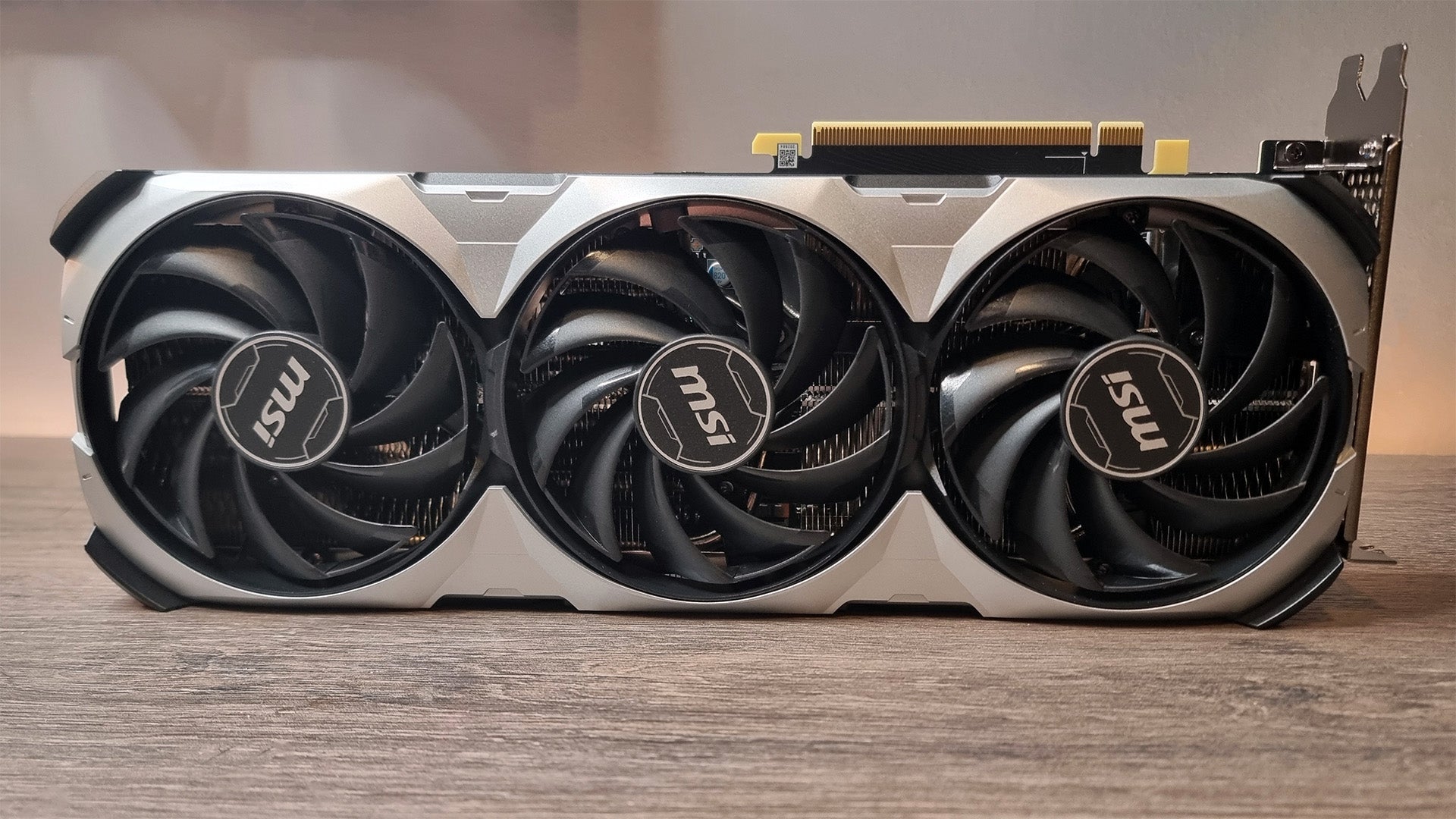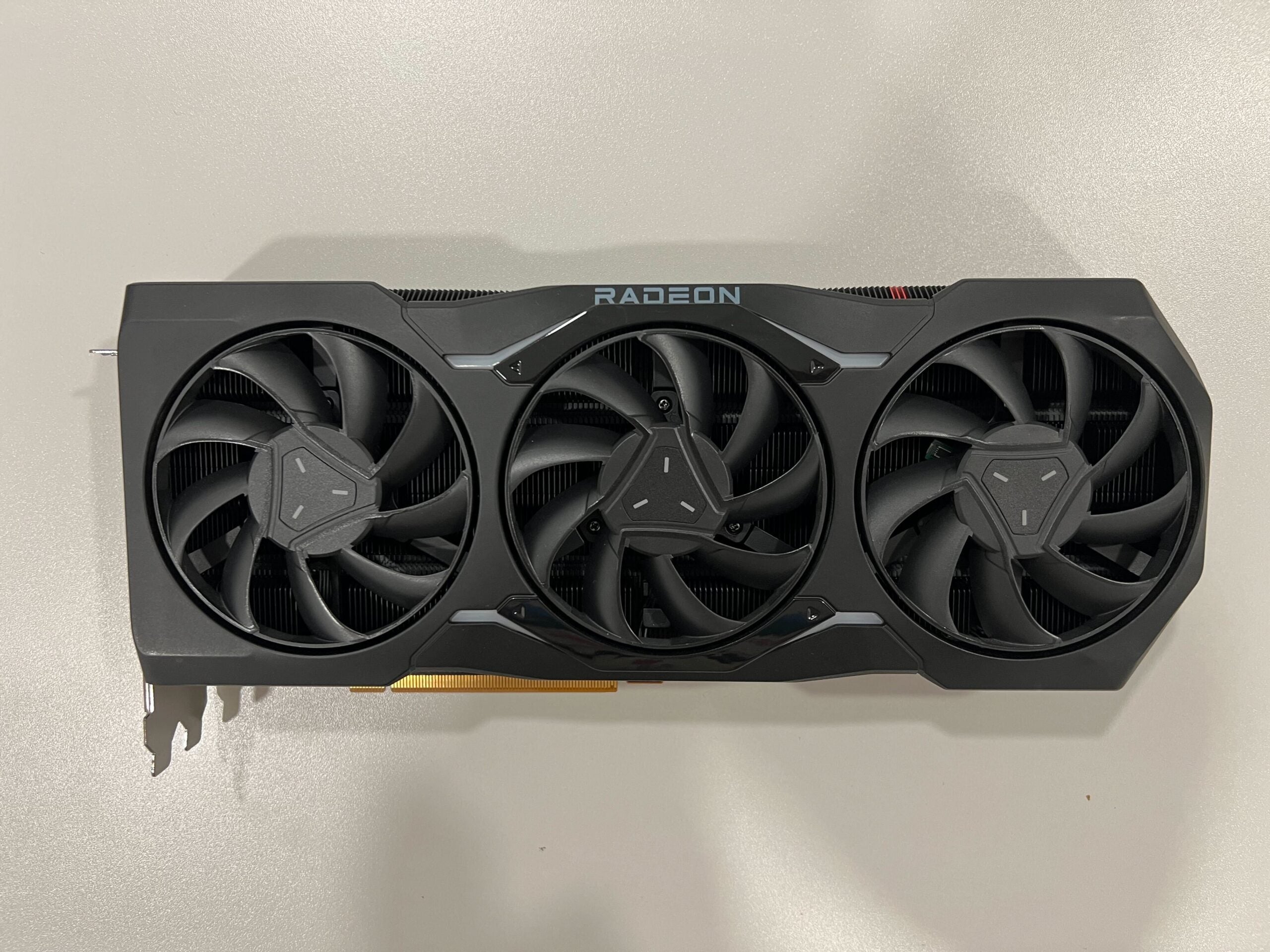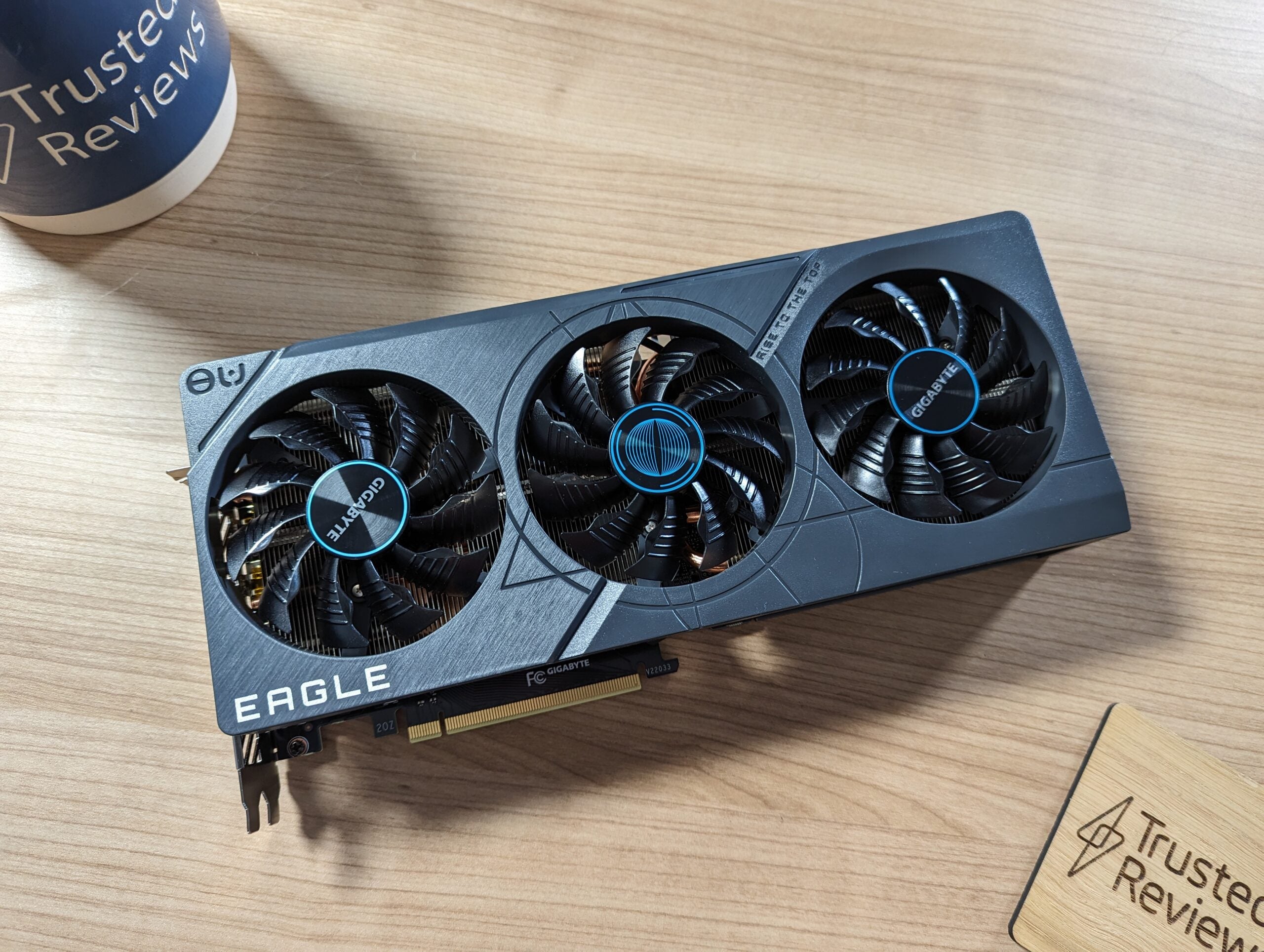Nvidia GeForce RTX 4070 Super Review
Not a huge step up but still dominates at 1440p and, even, 4K.
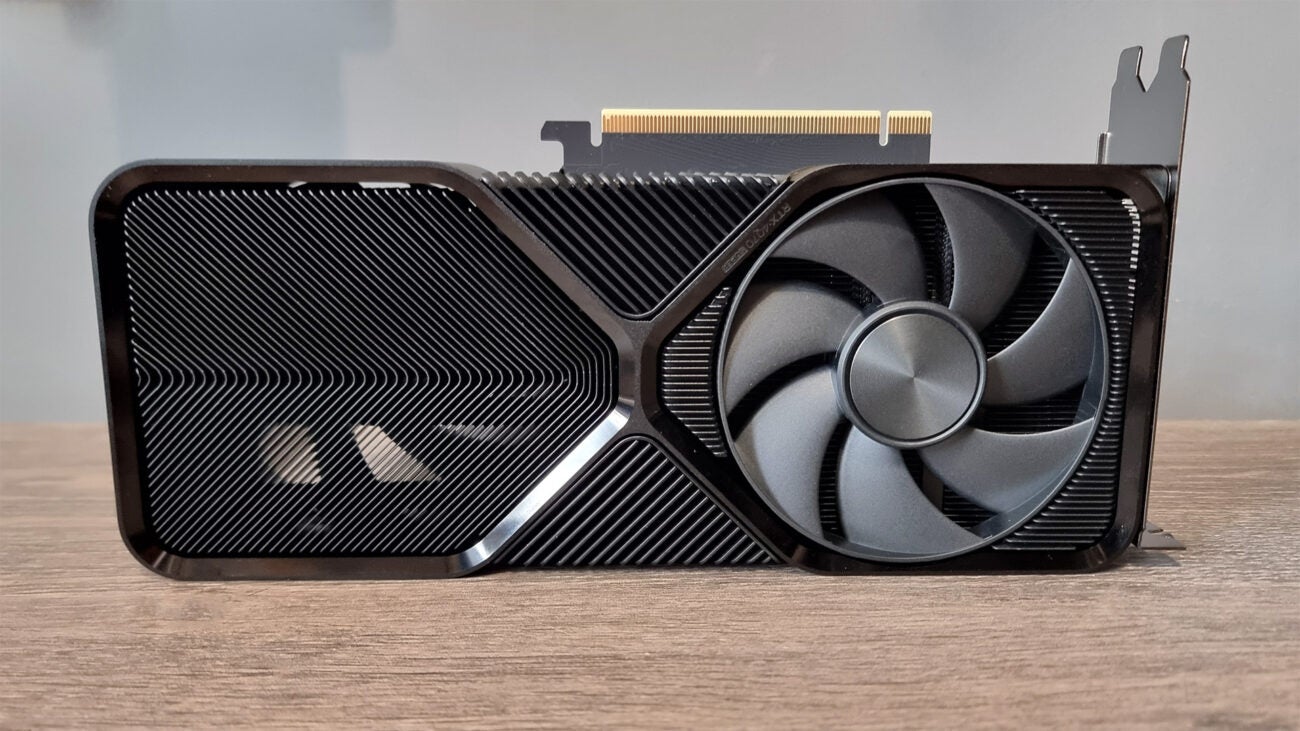
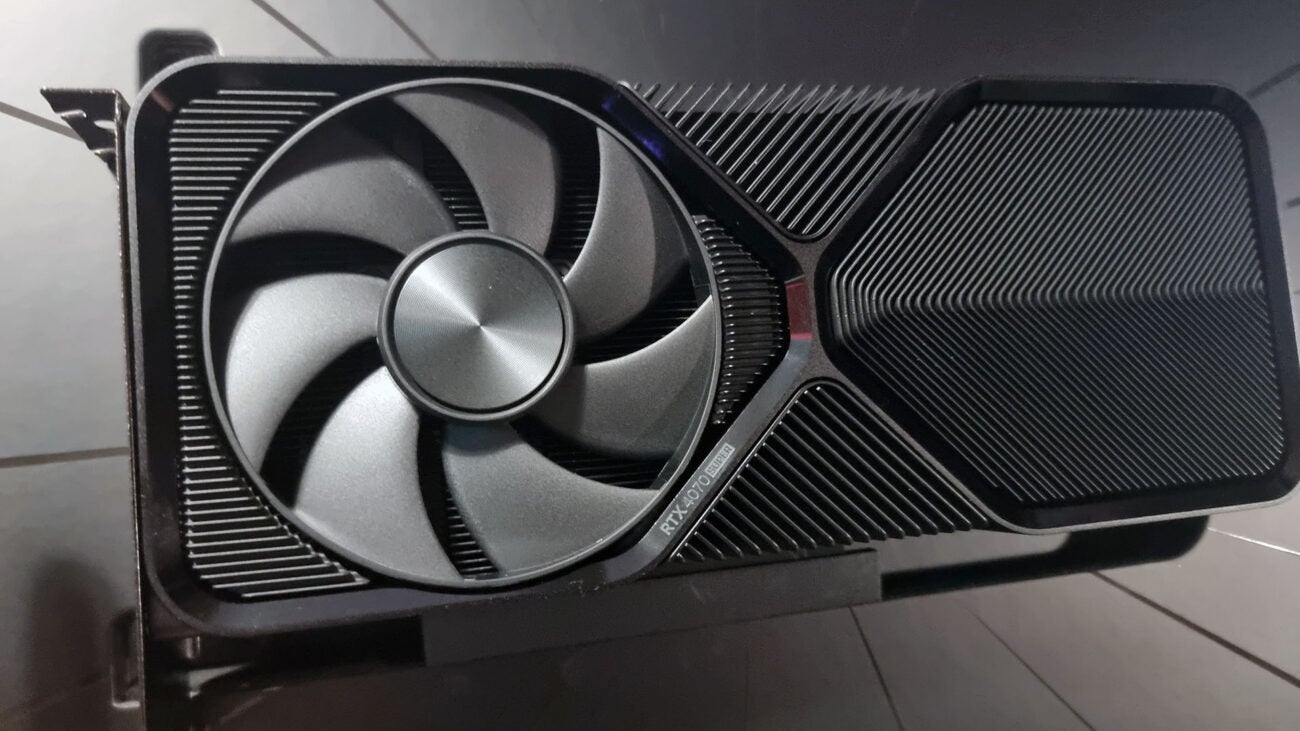
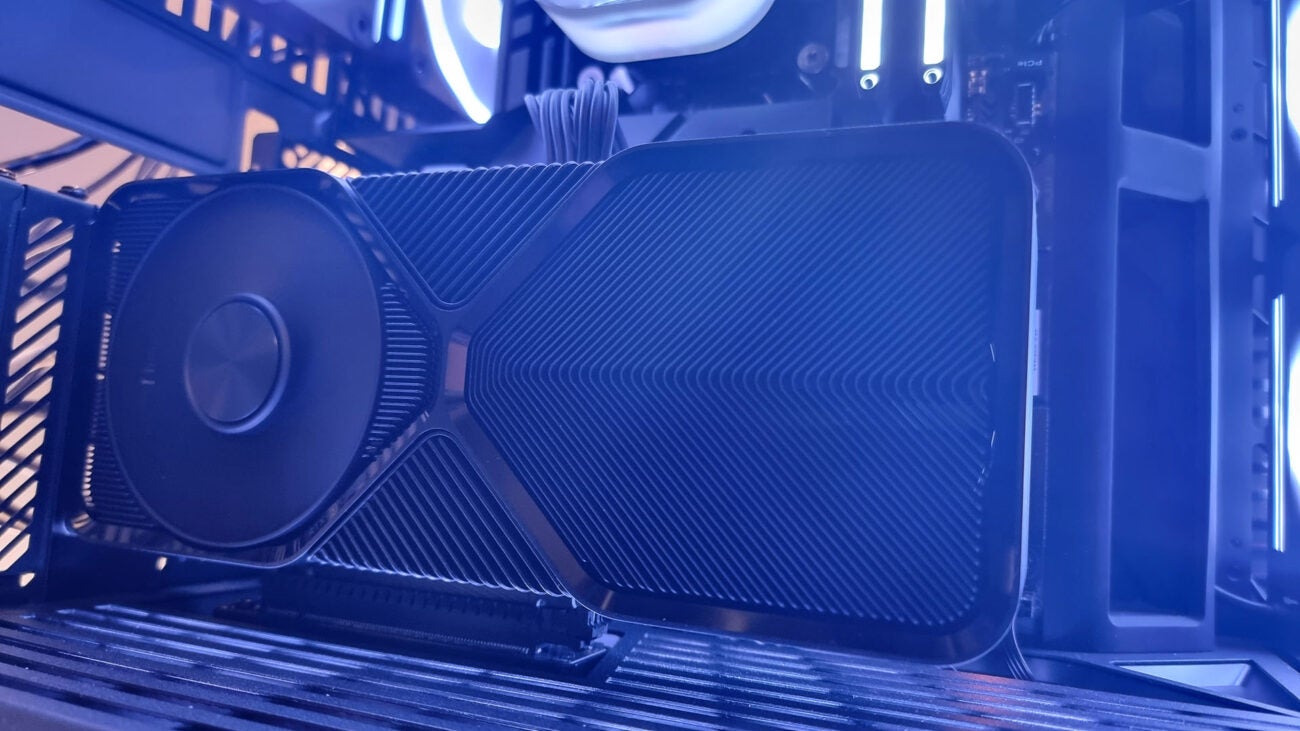
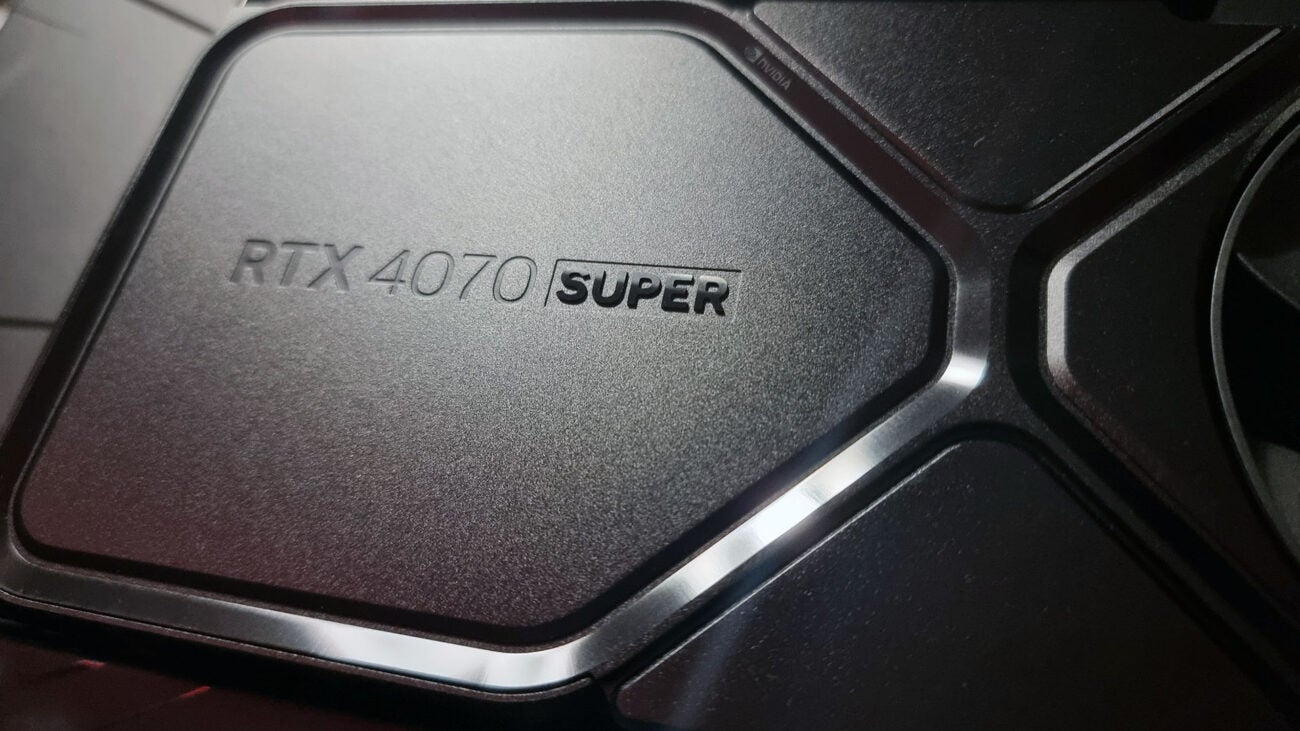
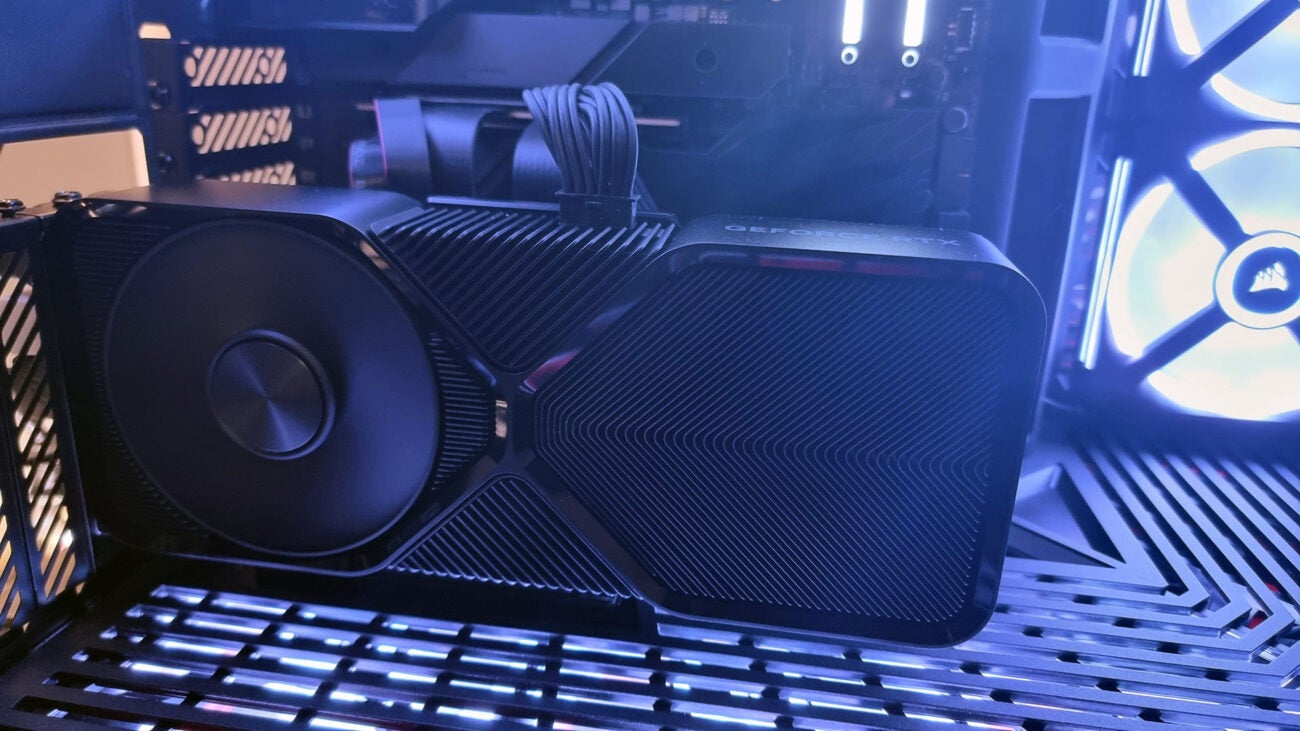
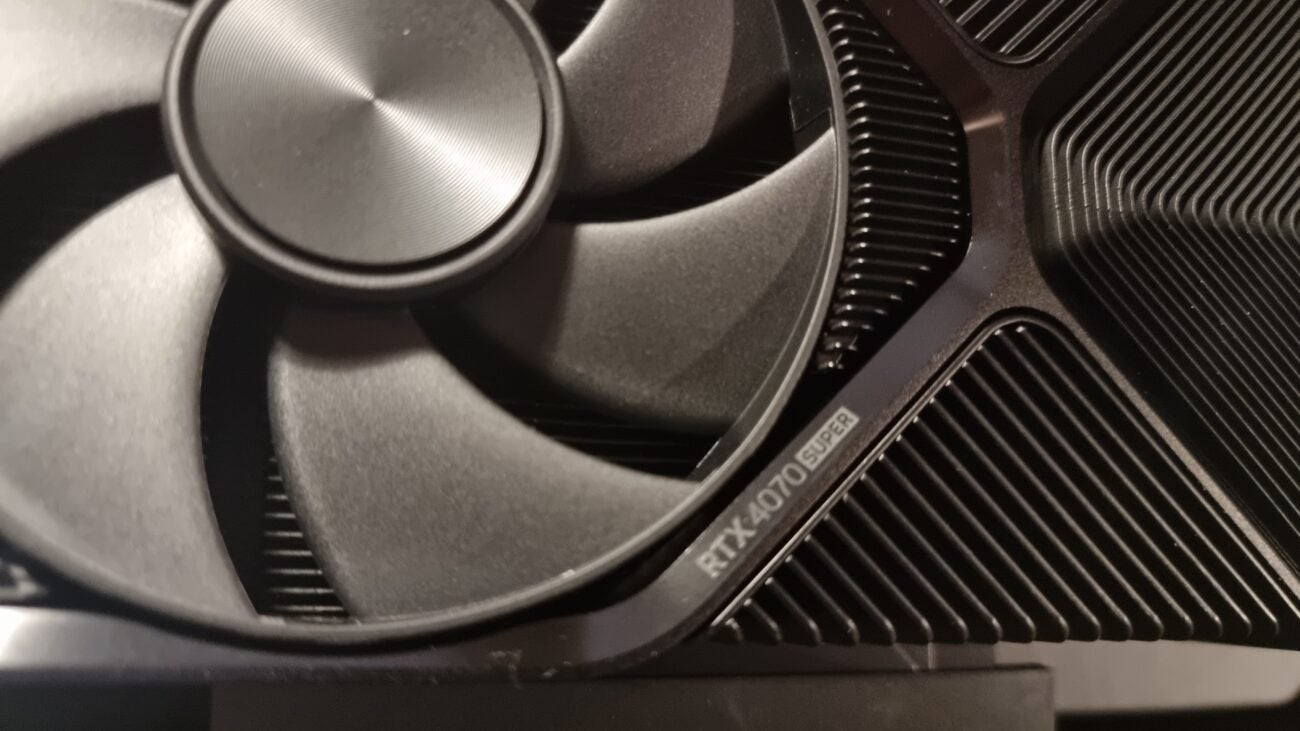
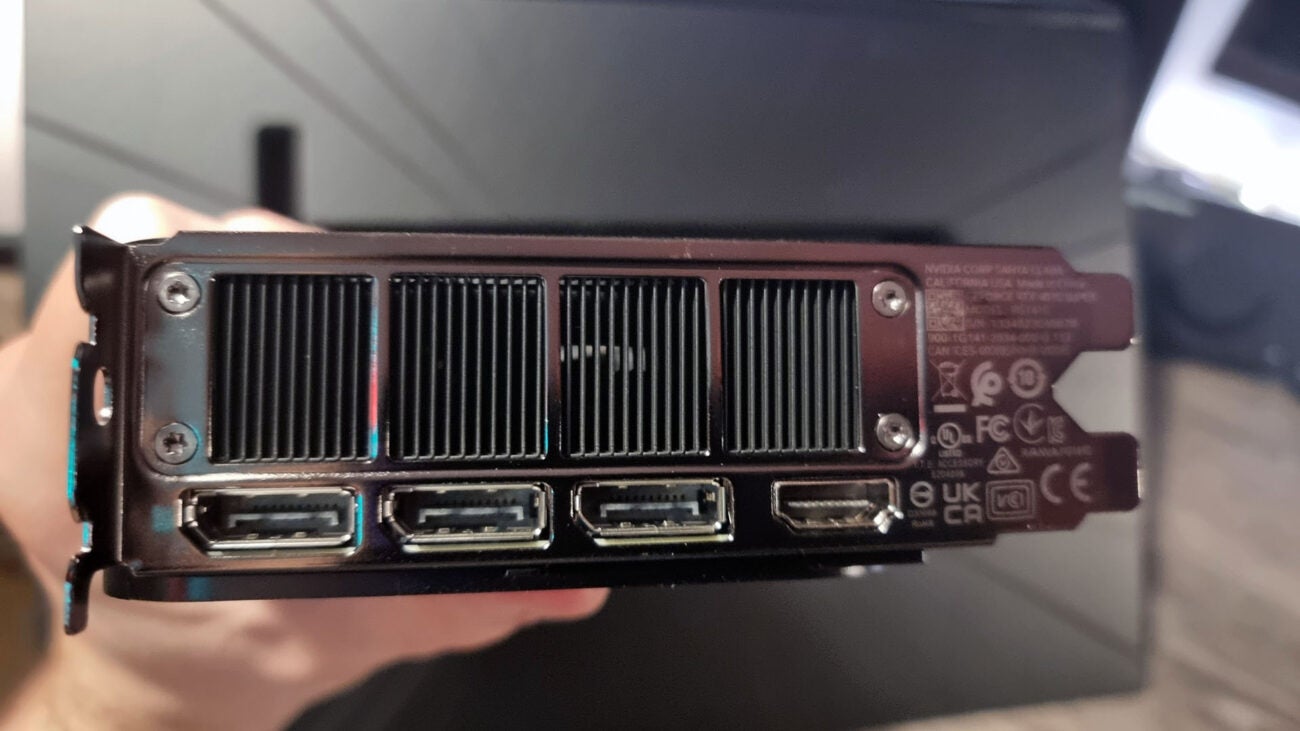
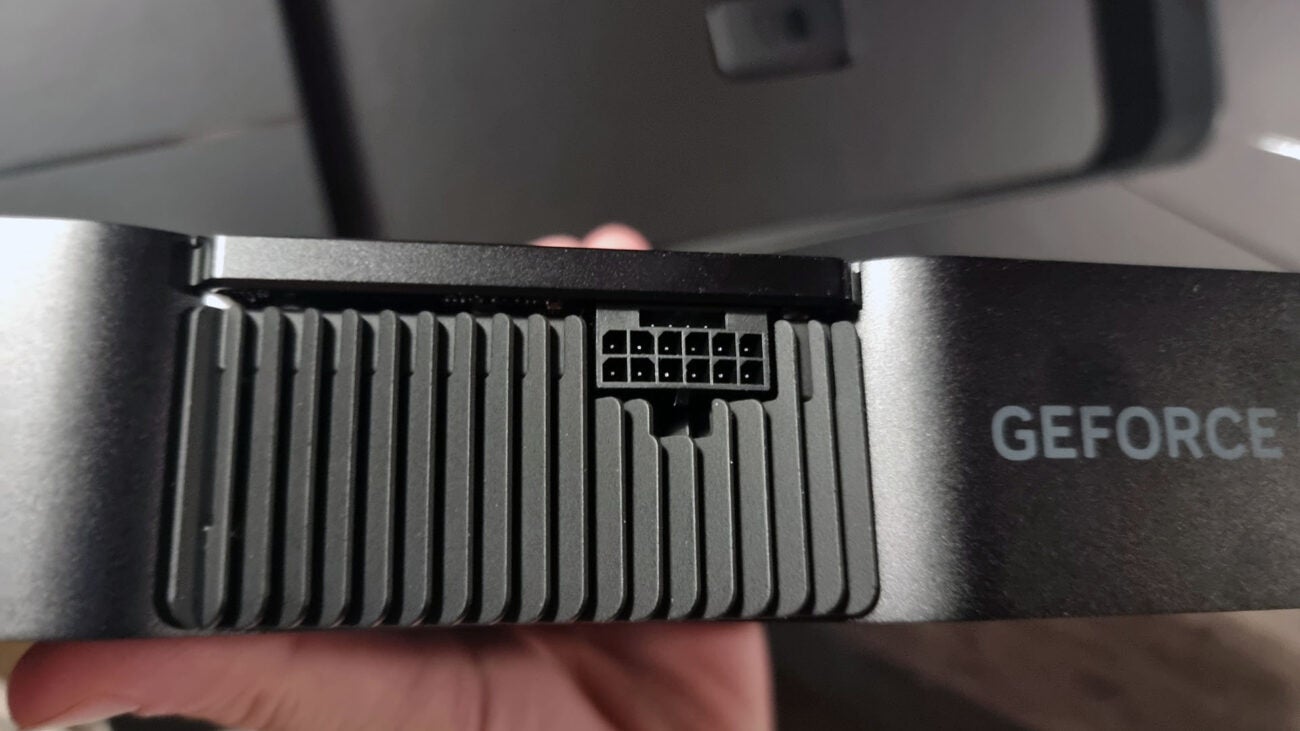

Verdict
Nvidia’s GeForce RTX 4070 Super is an intriguing new addition to the lineup. From a purely generational standpoint, it’s not that exciting. If you already own an RTX 4070, you should stick with it. However, standalone the 4070 Super continues to dominate, particularly at 4K and 1440p, where in our testing suite average framerates across all titles sat at 55 and 101 fps respectively.
Pros
- Impressive performance at 4K and 1440p
- Super clean design, and compact form-factor
- Impressively cool under-load
- Ray-Tracing and DLSS performance shine
Cons
- Not a huge leap in performance compared to the RTX 4070
- Not all games support Ray tracing or DLSS
Where to Buy
Gigabyte Nvidia GeForce RTX 4070 Super Windforce OC 12GB
Inno3D Nvidia GeForce RTX 4070 Super Twin X2 12GB
Palit Nvidia GeForce RTX 4070 Super Dual 12GB
Asus Nvidia GeForce RTX 4070 Super Dual 12GB
MSI Nvidia GeForce RTX 4070 Super Ventus 2X OC 12GB
Zotac Nvidia GeForce RTX 4070 Super Twin Edge 12GB
Key Features
- Ada Lovelace architectureNvidia’s 4000 series RTX cards pack some seriously impressive performance for the price.
- Ray tracing and DLSS support3rd generation ray tracing cores are combined with Nvidia’s AI Tensor cores.
- Nvidia Broadcast & AV1 EncoderA new far smoother encoder for live-streaming and improved Broadcast streaming software.
Introduction
Here we have it folks, this is the Nvidia GeForce RTX 4070 Super. At CES this year, Nvidia unveiled a whole array of brand-new Super GPUs, adding to its current arsenal of graphics cards. That included the RTX 4070, 4070 Ti, and 4080 Super. Over the last few weeks, I’ve been lucky enough to get hands-on testing of what’s arguably the most interesting GPU of the bunch, the Nvidia RTX 4070 Super.
This mid-range graphics card comes in at an impressive $599 at retail and is aimed predominantly at those on the hunt for a good 1440p GPU. It’s launching first with the standard Founders Edition cooler that you can see here, alongside several other manufacturer designs, which will include better cooling designs, custom PCBs, and likely higher clock speeds as a result.
Specs
- Improved hardware over the current RTX 4070
- Clock speeds increased with power draw too
- Pricing remains the same as RTX 4070
Nvidia’s GeForce RTX 4070 Super has quite an impressive jump over its older RTX 4070 counterpart so far as hardware is concerned. From CUDA Cores to ray tracing hardware, and everything in between, all of it has seen a significant increase in number compared to the last generation. You’ll find about 20% more hardware on this card than the original RTX 4070, and that does show when it comes to performance, particularly at 1080p and 1440p.


As for the raw spec numbers, CUDA cores (the traditional cores, that do 3D rasterisation, think non-ray tracing graphics using 3D polygons) have jumped up from 5,888 to 7,168 alone. Then on top of that, ray tracing cores have been bumped up from 46 to 56 (an increase of just under 22%), and the Tensor cores (responsible for AI operations and in our use case, DLSS antialiasing specifically) have gone from 184 to 224 as well. The on-board L2 cache has also seen a 12MB bump. Because of all that, been a TDP increase to compensate for the new hardware and tweaked clocks. The RTX 4070 originally debuted at 200W whereas the new RTX 4070 Super hits the mark at 220W. But let’s be clear, a 10% increase in power draw, for all this extra kit, is a fair trade.
The RTX 4070 Super is far closer in spec and performance to the RTX 4070 Ti than it is its namesake, the 4070. It may leave a sour taste in the mouth of current RTX 4070 owners, but it’s nonetheless a nice performance bump to have mid-generation, particularly when the price remains the same as the RTX 4070.
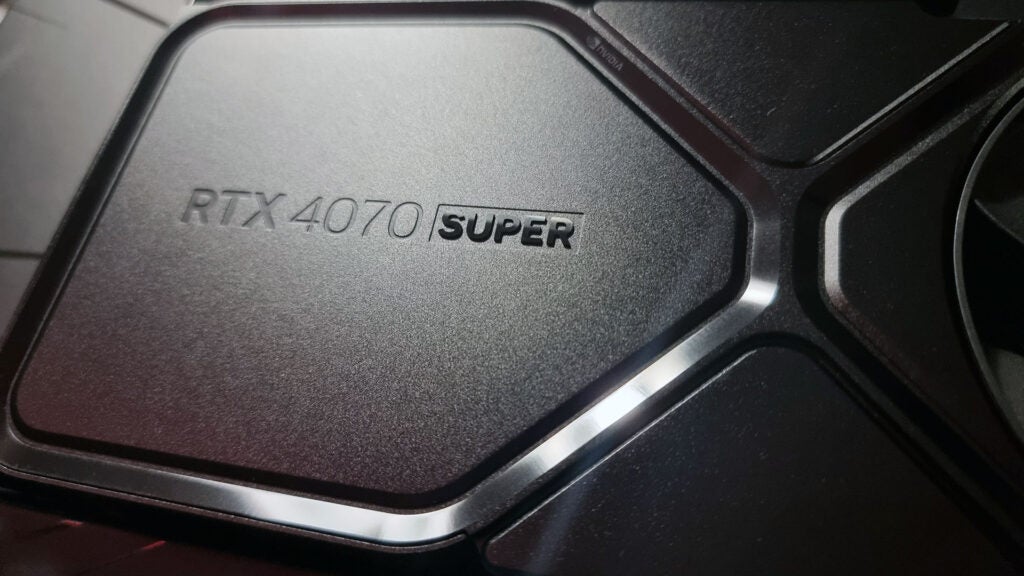
It does, however, still only feature 12GB of GDDR6X. That does hold it back when it comes to 4K gaming, particularly with those larger textures. If you are after more VRAM, the RTX 4070 Ti Super, has had its capacity increased from 12GB to 16GB, making it a little more potent for 4K gaming.
Test Setup
To put Nvidia’s GeForce RTX 4070 Super to the test, I took it, and a few of its siblings to task, running them through a huge array of synthetic and real-world tests. For that, I needed a solid and dependable test bed. One that ensured there wouldn’t be any bottlenecks from any of the other components in the system.
CPU: Intel Core i9-14900K
RAM: 32GB (2x16GB) Corsair Dominator Titanium @ 7200
Motherboard: Asus ROG Maximus Z790 Dark Hero
CPU Cooler: Corsair iCUE Link H150i LCD 360mm AIO
Cooling: 7x Corsair iCUE Link QX120 120mm fans
PSU: 1200W Corsair RMx Shift 80+ Gold PSU
SSD: 2TB Gigabyte Aorus Gen5 12000 M.2 PCIe 5.0 SSD
Case: Hyte Y70 Touch
I’ve taken advantage of a broad spectrum of benchmarks for this review, including the likes of 3DMark’s Fire Strike, Speedway and Port Royal, Blender’s Monster, Junkshop, and Classroom benchmarks, along with eight games, tested at all three major resolutions. Max temperature is recorded throughout the benchmarking process, and power-draw likewise, is handled by a power meter plugged directly into the wall.
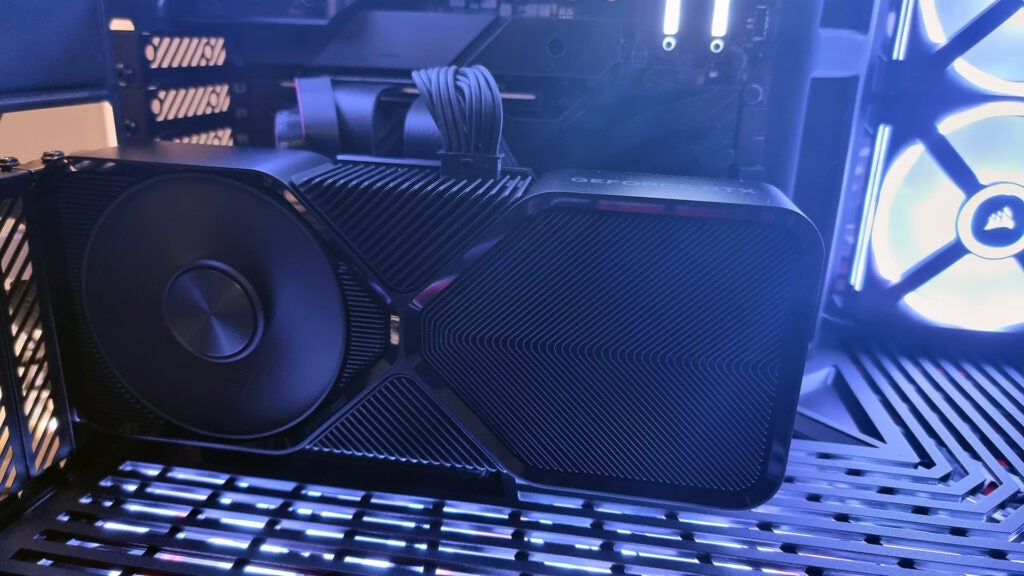
Some of our benchmark games do have ray tracing features enabled by default (as these are included in the highest graphical presets, which we use for testing). Namely, Cyberpunk 2077, and F1 22. However, I have ensured DLSS is disabled throughout the testing suite for our standard array of games.
Performance and Benchmarks
- Nvidia’s GeForce RTX 4070 Super continues to dominate at 1440p and 4K
- Some titles do rely heavily on DLSS to maintain comfortable framerates
- Power draw and temperature are within comfortable parameters
- Average frame rates are 12.5% better at 1440p and 13.5% at 4K
Across our synthetic benchmark testing, as you can see below, the new Nvidia GeForce RTX 4070 Super comfortably tops its RTX 4070 predecessor. This is the case across gaming-focused 3DMark testing and creator-focused Blender benchmarks, with around a 10% uplift in each test that shows its chops across both categories. Fire Strike Ultra saw the highest jump, with the 4K gaming benchmark test showing a more than 20% boost.
In isolation, the RTX 4070 Super absolutely monsters pretty much every title we could throw at it at 1080p and 1440p. In every test at 1080p, we saw frame rates skyrocket well above the 140 fps mark, including Red Dead Redemption II and Total War: Warhammer III. 1440p saw those framerates drop to floating just around the 100 fps mark, with a few noticeable titles lower being F1 2022 and Cyberpunk.
The big standout however was our 4K testing. Almost every single title hit the 50/60 fps mark, if not more in some cases. That’s great to see, particularly as 4K monitors continue to fall in price.
Cyberpunk 2077, with DLSS disabled, and ray tracing enabled, does however destroy pretty much every card we throw at it. Even the RTX 4080 struggles at 4K achieving just 29 fps, and this does pull our average frame rates lower because of it.
Ray Tracing and Upscaling
- DLSS 3.5 continues to revolutionize performance at 4K
- Ray Tracing although looking incredible significantly impacts frame rates still
- With both enabled, you do see a noticeable increase in power draw
To get to grips with the ray tracing performance of our RTX 4070 Super, I ran it through three separate games at 4K, under several conditions. First with no ray tracing or DLSS, then with only DLSS, after that ray tracing enabled and no DLSS, and, finally, with both enabled.
The difference between these configurations is impressive, to say the least. Cyberpunk, for example, achieved 19 fps at 4K on average, but 78 with ray tracing disabled and DLSS active. Pop ray tracing on with DLSS as well, and you’ll easily achieve 59 fps, well within that 60 fps sweet spot.
Power Consumption and Temperature
Nvidia’s RTX 4070 Super also remains remarkably cool. There is a slight jump compared to the original RTX 4070, but it’s fairly minor, with the 4070 Super peaking at 71 C under load. More impressively, however, was the peak power draw – pulling only 611.7 W from the wall versus the RTX 4070’s 612.3 W.
It’s also worth mentioning that my RTX 4070 card is a Gigabyte Gaming OC variant, which is significantly larger, and does feature three fans with higher clock speeds than the stock variant, but, still, to retain such a similar power draw and increase performance is nothing if not impressive.
Where to Buy
Gigabyte Nvidia GeForce RTX 4070 Super Windforce OC 12GB
Inno3D Nvidia GeForce RTX 4070 Super Twin X2 12GB
Palit Nvidia GeForce RTX 4070 Super Dual 12GB
Asus Nvidia GeForce RTX 4070 Super Dual 12GB
MSI Nvidia GeForce RTX 4070 Super Ventus 2X OC 12GB
Zotac Nvidia GeForce RTX 4070 Super Twin Edge 12GB
Should you buy it?
You want a 1440p or 4K gaming GPU
Nvidia’s RTX 4070 Super, in isolation, is a fantastic graphics card for anyone looking to upgrade their system and comfortably hit either 100 fps at 1440p or 60 fps at 4K. It represents an impressive value proposition, and although it doesn’t necessarily wipe the floor with the RTX 4070, it’s still the card to pick out of the two right now.
The best 4K graphics card out there
Nvidia’s RTX 4070 Ti Super, 4080, 4080 Super, and 4090, are still far better suited for gaming at 4K. With larger VRAM buffers and far more CUDA and RT cores, they quite easily dominate the RTX 4070 Super by comparison
Final Thoughts
The Nvidia GeForce RTX 4070 Super may well be one of the best graphics cards out there today. Nvidia continues to cement itself as the dominant GPU manufacturer today, particularly with the continued push for better ray tracing and DLSS support across the industry.
And, that’s the thing, ray tracing is now so synonymous with gaming, and the titles in it, that it almost doesn’t warrant talking about on its own, it’s baked into default graphical profiles and more. With DLSS supporting it, and the performance advancements both it and its AI machine learning bring to the table seriously tangible, cards like these make higher resolutions far more accessible than just trying to brute force it with computational horsepower.
Nvidia’s RTX 4070 Super is a fantastic card. If you’re still stuck on an RTX 2000 series graphics card or older, it’s an absolute powerhouse, and upgrading to this thing won’t leave you disappointed.
How we test
Every graphics card we get is run through a series of real-world and synthetic benchmarks. This allows us to push it to the limit, and gauge its performance across several different scenarios while analyzing its power efficiency and thermal dynamics.
Tested with in-game benchmarks
Compared against other cards we’ve tested
Power consumption checked
FAQs
Yes, the RTX 4070 Super on average is 12.5% better at 1440p and 13.5% at 4K. It’s also the same price as the RTX 4070 as well.
The Nvidia Founders Edition we have here does, however the RTX 4070 Super is capable of running from two 8-pin PCIe power cables. You may find third-party manufacturer cards that support direct PCIe power instead of the 12VHPWR cable we have here.
Yes, it solidly pulls frame rates at or above 60 fps across the majority of our testing suite. If you enable DLSS as well that number climbs higher too.

